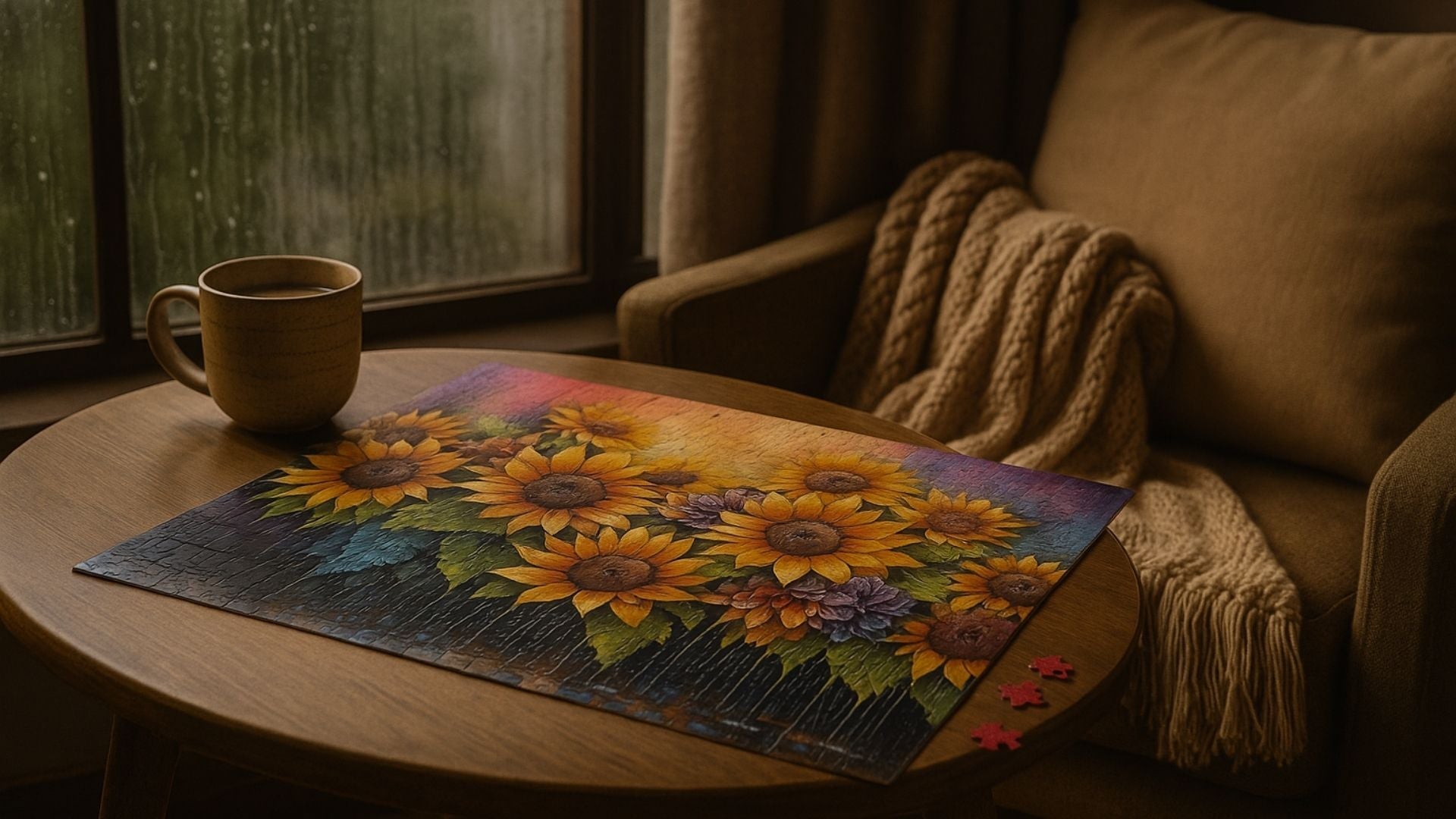A Home That Holds You Steady
Life doesn’t always slow down just because we need it to. Sometimes the chaos comes anyway—through news headlines, busy schedules, unpredictable emotions, or just the weight of existing in a world that rarely stops moving.
That’s why your home should do more than look good. It should hold you.
Your space—your corner, your room, your table—can become an emotional anchor. Not by being perfect, but by being intentional. In the middle of life's mess, a soft lamp, a quiet ritual, or even a puzzle can offer something rare: stillness you can touch.
The Psychology of Repetition and Focus
When things feel out of control, your brain craves repetition, pattern, and low-stakes order. That’s where puzzle-solving becomes more than just a pastime—it becomes a grounding practice.
Research from the Journal of Cognitive Enhancement shows that repetitive, hands-on tasks like jigsaw puzzles can reduce stress by activating the parasympathetic nervous system—the part of your body that signals safety and rest (source).
-
You're not solving a crisis. You're solving an image.
-
You’re not answering to anyone. You're aligning shapes.
-
And piece by piece, you’re reminding yourself: It’s okay to focus on this one small thing.
A Puzzle That Feels Like Hope
The Raindrop Sunflower Puzzle isn’t just beautiful—it’s emotionally rich.
Sunflowers have long symbolized warmth and optimism, but the background here is something else: a wash of deep color, rain streaks, and blurred light. It’s not perfect. It’s poetic. It reflects the reality that beauty can grow in unpredictable, even chaotic conditions.
🧩 This is a puzzle for anyone trying to find comfort in uncertainty.
For anyone learning how to be okay with not being okay.
For anyone who just wants something beautiful to hold on to for a while.
Designing for Emotional Safety
Home design doesn’t have to mean renovation. It means creating moments of calm. Here's how to shape your space around emotional relief—without buying anything new.
1. Create a “Centering Spot”
Choose one corner of your home and give it a simple purpose: to hold you steady.
That might be:
-
A small table for puzzles or journaling
-
A candlelit shelf with objects you love
-
A chair with a favorite throw and nothing else
Make it intentional. Let it exist without function—other than your peace.
2. Layer Visual Texture
Use textiles and images that make you feel held. Woven textures, natural fibers, and warm-toned imagery (like sunflowers, landscapes, or dusk scenes) remind your nervous system that it’s safe to rest.
3. Make Room for Quiet Activities
Leave out a puzzle in progress. Let it live on the table without urgency. The presence of something gentle and incomplete says:
You don’t have to finish everything to feel whole.
Grounding Through Small Rituals
A puzzle can be part of your emotional toolkit—not for escape, but for return.
📦 Open the box.
🧩 Pour out the pieces.
💡 Turn on soft lighting or open a window.
🕯️ Light a candle or put on calming music.
👐 Breathe into the act of arranging, finding, clicking.
This is not wasted time. This is regulation. Restoration. A kind of meditative rhythm we rarely allow ourselves in a loud world.
Why Sunflowers in a Storm Matter
The Raindrop Sunflower puzzle reminds us that beauty doesn’t always bloom under blue skies. Sometimes it shows up where we least expect it—colorful, bold, and steady, even when the background is messy.
That’s what home should be too:
A place that welcomes the rain, holds your heart, and lets your joy grow anyway.
Frequently Asked Questions
Q: Can puzzles really help with anxiety?
Yes. Studies show that focused, non-demanding tasks like puzzles promote mindfulness and reduce cortisol, the body’s stress hormone (source).
Q: What kind of decor supports emotional regulation?
Natural textures, soft lighting, and calming visuals—like sunflowers, muted colors, and tactile activities—can all support nervous system recovery.
Q: Is it okay to leave a puzzle out even if it looks messy?
Absolutely. A puzzle in progress can be a visual reminder that not everything needs to be complete to be meaningful.
Add a Quiet Anchor to Your Day
🧩 Raindrop Sunflower Puzzle – 500 or 1000 Pieces
It’s not just about what you do. It’s about what makes you feel whole again—one small moment at a time.
Warmly,
The Cozy Corner by Durazza
Blankets | Candles | Puzzles | Journals | Pillows | Duvet Covers | Wall Art

